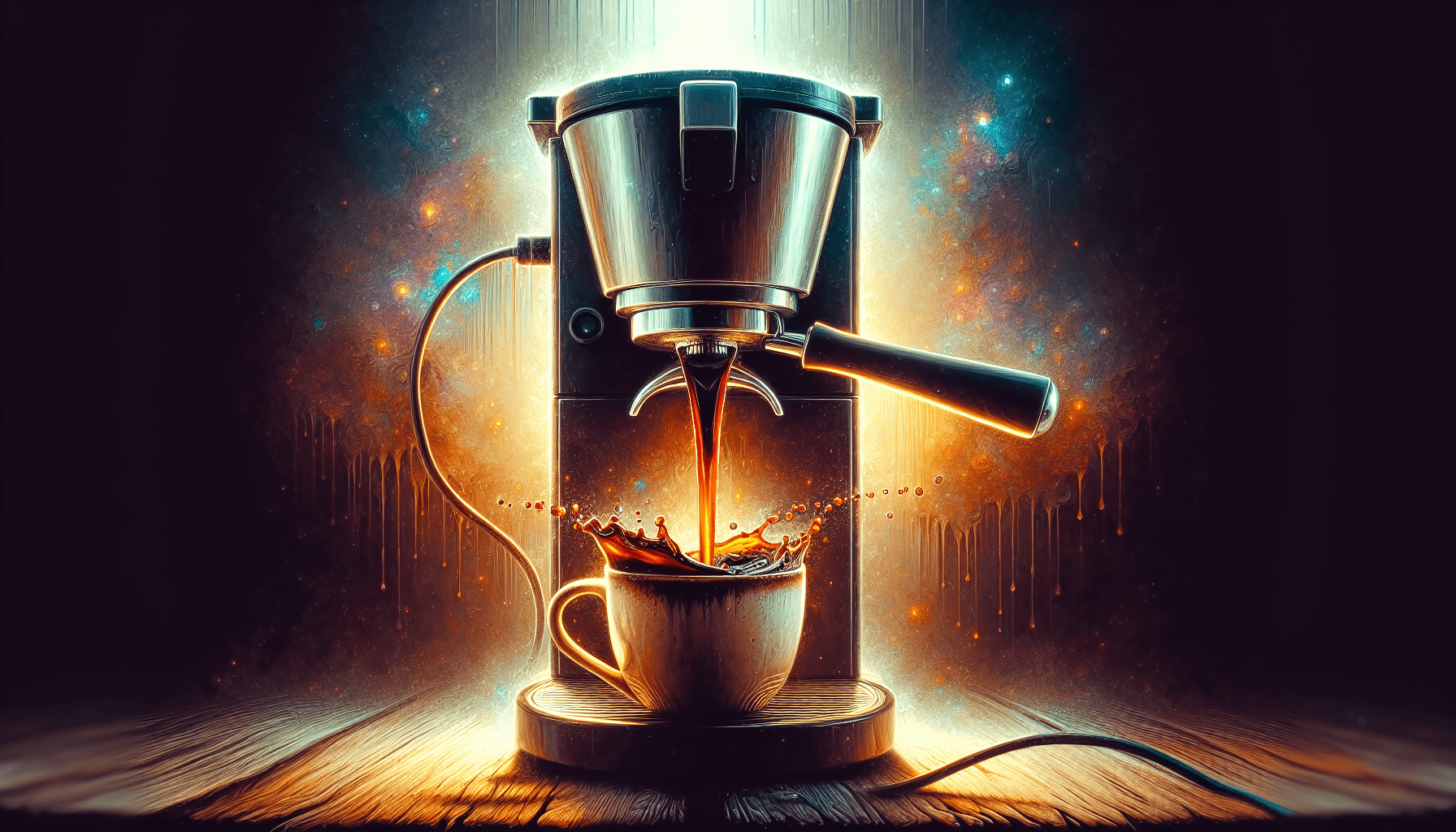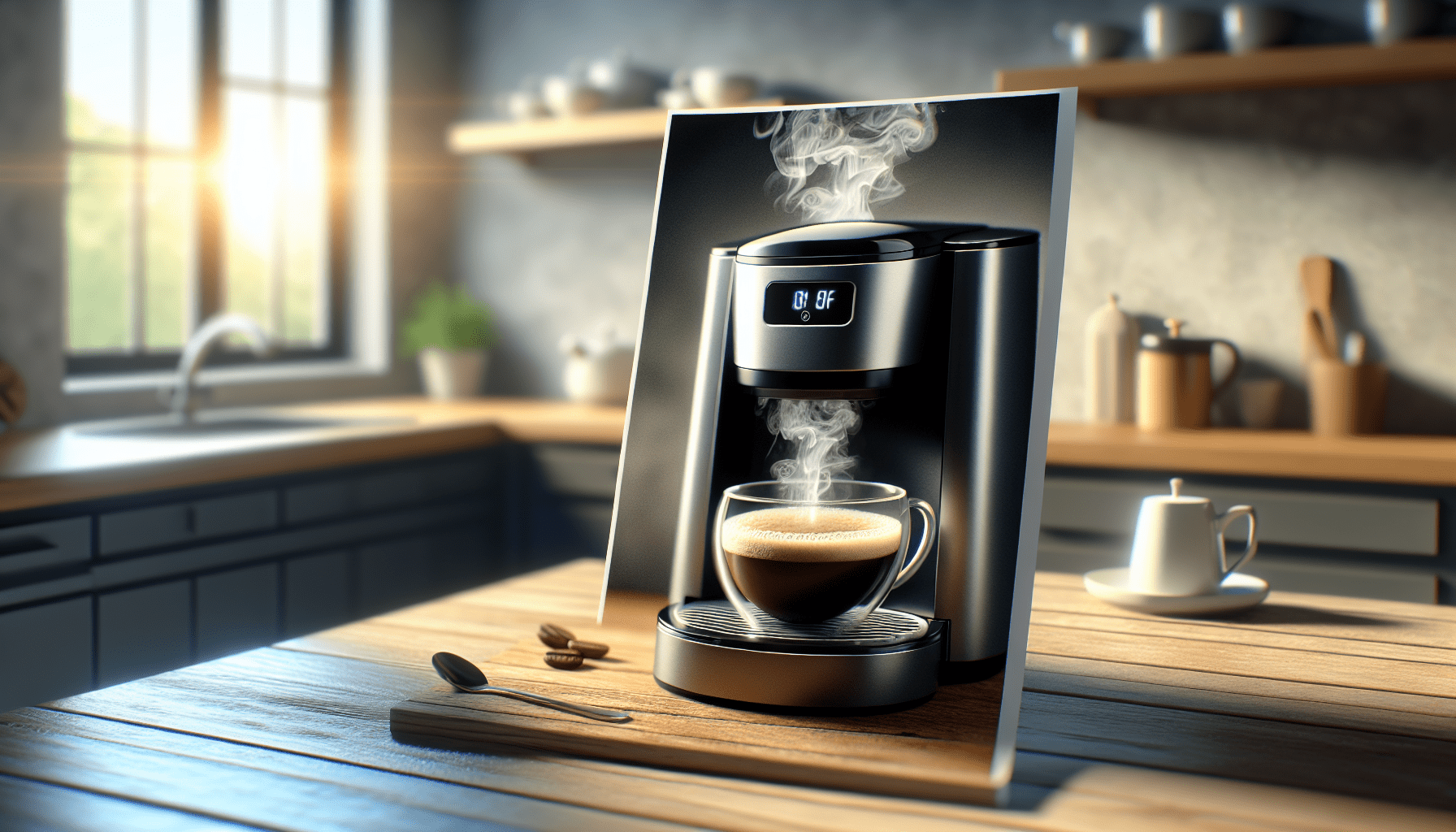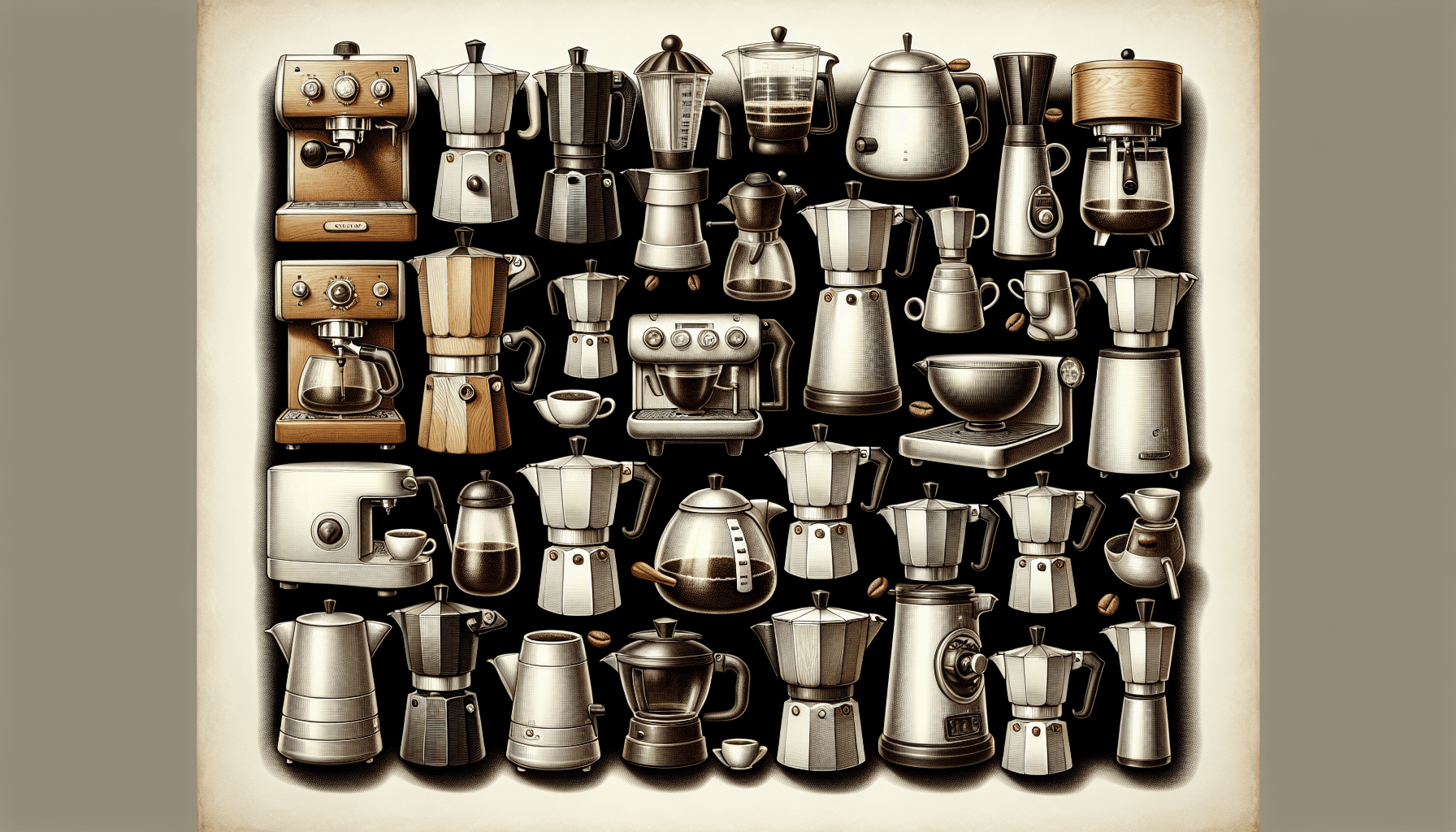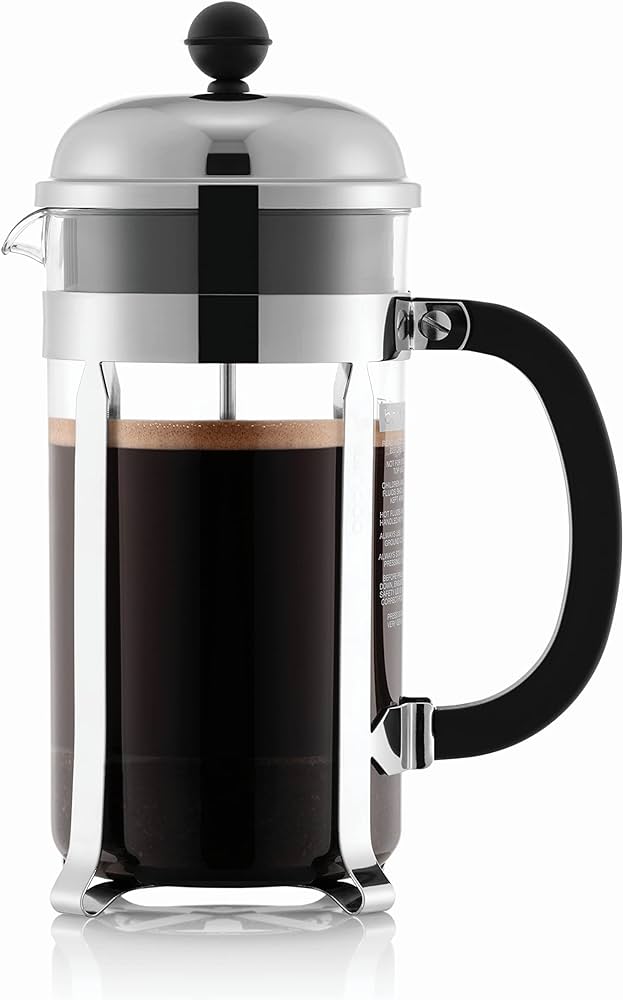Do you ever find yourself wondering how long you should brew coffee in a drip coffee maker? It’s a question that many coffee enthusiasts ponder, as the brewing time can greatly affect the taste and quality of your morning cup of joe. In this article, we’ll explore the optimal brewing time for drip coffee makers, providing you with all the information you need to brew the perfect cup each and every time. So grab your favorite mug and let’s dive into the world of drip coffee brewing!
Factors that affect brewing time
Coffee-to-water ratio
The ratio of coffee to water is a significant factor that affects brewing time. A higher ratio of coffee grounds to water will generally result in a longer brewing time, as the water takes longer to extract the desired flavors and compounds from the beans. On the other hand, a lower ratio will result in a shorter brewing time.
Grind size
The grind size of the coffee beans also plays a crucial role in determining the brewing time. Finely ground coffee beans will have a larger surface area, allowing for faster extraction of flavors and compounds. Conversely, coarsely ground coffee beans will take longer to extract, resulting in a longer brewing time.
Water temperature
The temperature of the water used for brewing also impacts the brewing time. Hotter water will extract flavors more quickly, leading to a shorter brewing time. Conversely, colder water will require a longer brewing time to extract the desired flavors from the coffee beans.
General brewing guidelines
Start with a ratio of 1:15
As a general rule of thumb, starting with a coffee-to-water ratio of 1:15 is a reliable guideline for brewing coffee in a drip coffee maker. This means using 1 gram of coffee for every 15 grams of water. However, this ratio can be adjusted based on personal preferences and the specific coffee beans being used.
Experiment with grind size
To optimize the brewing time, it is recommended to experiment with different grind sizes. Finer grind sizes will result in shorter brewing times, while coarser grind sizes will require more time for extraction. By adjusting the grind size, you can find the perfect balance to achieve your desired flavor profile.
Use water between 195-205°F
The ideal water temperature for brewing coffee in a drip coffee maker is between 195-205°F (90-96°C). This temperature range ensures proper extraction of flavors and compounds from the coffee grounds. Using water outside of this range may result in over- or under-extracted coffee.
Determining the optimal brewing time
Follow the manufacturer’s recommendations
When brewing coffee in a drip coffee maker, it is often helpful to follow the manufacturer’s recommendations regarding the optimal brewing time. Each coffee maker may have slightly different specifications and guidelines, so it is a good starting point to ensure a well-balanced brew.
Taste the coffee during brewing
One of the best ways to determine the optimal brewing time is by tasting the coffee as it brews. As the brewing process progresses, the flavor profile of the coffee will change. By periodically tasting the coffee, you can assess the flavor and make adjustments to the brewing time if necessary.
Adjust the brewing time based on taste
If the coffee tastes too weak or under-extracted, it may indicate that the brewing time is too short. On the other hand, if the coffee tastes bitter or over-extracted, it may indicate that the brewing time is too long. Adjusting the brewing time based on taste will help you achieve your desired flavor intensity and balance.
Under-extracted vs. over-extracted coffee
Under-extracted coffee
Under-extracted coffee refers to coffee that has not been properly extracted during the brewing process. As a result, the coffee may taste weak, sour, or lacking in flavor. This can be caused by a brewing time that is too short or a coffee-to-water ratio that is too low. Adjusting the brewing time or ratio can help alleviate under-extraction.
Over-extracted coffee
Over-extracted coffee, on the other hand, refers to coffee that has been extracted for too long or with too much intensity. This can result in a bitter, harsh, or astringent taste. Over-extraction is often caused by a brewing time that is too long or a coffee-to-water ratio that is too high. Adjusting these factors can help prevent over-extraction.
Benefits of experimenting with brewing time
Discovering your preferred strength
By experimenting with brewing time, you can discover your preferred strength of coffee. Some individuals enjoy a milder, more subtle flavor, while others prefer a stronger and bolder taste. Adjusting the brewing time allows you to find your perfect balance and strength.
Enhancing the flavors of different coffee beans
Different coffee beans have unique flavor profiles that can be enhanced by adjusting the brewing time. Some beans may benefit from a shorter brewing time to bring out their brighter, fruitier notes, while others may require a longer brewing time to develop their rich, chocolatey flavors. Experimenting with brewing time allows you to fully appreciate the nuances of each coffee bean.
Achieving a balanced cup of coffee
The brewing time can significantly impact the overall balance of a cup of coffee. By adjusting the brewing time, you can achieve a well-balanced brew that brings out the best flavors and aromas of the coffee beans. This balance ensures a delightful and enjoyable coffee-drinking experience.
Common mistakes to avoid
Brewing for too short or too long
One common mistake is brewing coffee for either too short or too long. Brewing for too short results in under-extracted coffee, while brewing for too long leads to over-extracted coffee. It is essential to find the optimal brewing time to avoid these undesirable outcomes.
Using the wrong grind size
Using the wrong grind size can also impact the brewing time and overall flavor. If the grind size is too fine, the water may take longer to pass through the coffee grounds, leading to a longer brewing time. On the other hand, using a coarse grind may result in a quicker extraction and a shorter brewing time. Finding the right grind size is crucial for a well-balanced brew.
Inconsistent water temperature
Inconsistent water temperature can significantly affect the brewing time and the resulting flavor of the coffee. It is important to ensure that the water temperature remains within the recommended range of 195-205°F (90-96°C) throughout the brewing process. Fluctuations in temperature can lead to inconsistent extraction and flavor.
Tips for optimizing your brew
Start with fresh, high-quality coffee beans
Using fresh, high-quality coffee beans is the foundation for a great brew. The freshness of the beans ensures optimal flavor and aroma. Look for beans that have been recently roasted and stored properly to preserve their freshness. Investing in quality beans will greatly enhance your brewing experience.
Use a burr grinder for consistent grind size
To achieve consistent results, it is recommended to use a burr grinder. Burr grinders provide a more uniform grind size compared to blade grinders, which can result in uneven extraction. Consistency in grind size promotes even extraction of flavors and ultimately leads to a better-tasting cup of coffee.
Preheat your coffee maker and cup
Preheating your coffee maker and cup can help maintain the optimal brewing temperature throughout the process. Heating the coffee maker ensures that the water temperature remains consistent, allowing for proper extraction. Preheating the cup prevents a sudden temperature drop when pouring the brewed coffee, preserving its flavors.
Real-life examples of brewing times
Light roast coffee
For a light roast coffee, the brewing time is typically shorter, ranging from 4 to 6 minutes. Light roasts often have delicate flavors that can be overwhelmed by a longer brewing time. It is essential to monitor the brewing process closely to avoid under-extraction.
Medium roast coffee
Medium roast coffee generally requires a slightly longer brewing time compared to light roasts due to its slightly denser composition. A brewing time of 5 to 7 minutes is often suitable for medium roast coffee, allowing for a well-balanced and flavorful brew.
Dark roast coffee
Dark roast coffee beans are more porous and have oils on their surface, which can allow for faster extraction. Brewing dark roast coffee typically takes around 6 to 8 minutes, as the longer brewing time helps extract the rich and bold flavors inherent in these beans.
Adjusting brewing time for personal preferences
Mild and subtle flavors
If you prefer a milder and more subtle flavor profile, it is advisable to reduce the brewing time slightly. Shortening the brewing time by a minute or two can result in a lighter and more delicate cup of coffee, allowing the nuanced flavors to shine through.
Strong and bold flavors
On the other hand, if you prefer a stronger and bolder taste, extending the brewing time can intensify the flavors. Increasing the brewing time by a minute or two can extract more of the coffee’s compounds, resulting in a more robust and full-bodied cup.
Balanced and smooth flavors
For those seeking a balanced and smooth cup of coffee, it is crucial to find the sweet spot in terms of brewing time. This may involve experimenting and fine-tuning the brewing time until the desired balance is achieved. A well-balanced brew combines the best elements of both strength and subtlety.
The role of experimentation in brewing coffee
Discovering your perfect brewing time
The journey to finding the perfect brewing time for your coffee is often an experimental one. Each person’s taste preferences and the characteristics of different coffee beans can vary significantly. By experimenting with different brewing times, you can discover and refine your perfect balance, resulting in a truly personalized and satisfying cup of coffee.
Adapting to different coffee beans
Different coffee beans have distinct qualities and flavor profiles. Adapting your brewing time to suit each specific type of bean ensures that you extract the best possible flavors. Whether it’s a delicate light roast or a bold dark roast, experimenting with different brewing times allows you to fully appreciate the unique characteristics of each coffee bean.
Developing your brewing skills
Experimenting with brewing time not only allows you to find your preferred taste but also helps develop your brewing skills. Through trial and error, you will gain a deeper understanding of the factors that influence the brewing process and the impact they have on the final cup of coffee. This knowledge and experience will empower you to consistently brew excellent coffee.
In conclusion, the brewing time of coffee in a drip coffee maker is influenced by various factors, including the coffee-to-water ratio, grind size, and water temperature. Following general brewing guidelines and experimenting with these factors can help determine the optimal brewing time for your preferred flavor profile. It is essential to avoid common mistakes such as brewing for too short or too long, using the wrong grind size, and inconsistent water temperature. By optimizing your brewing process and embracing experimentation, you can unlock the full potential of your coffee beans and enjoy a truly personalized and exceptional cup of coffee.




